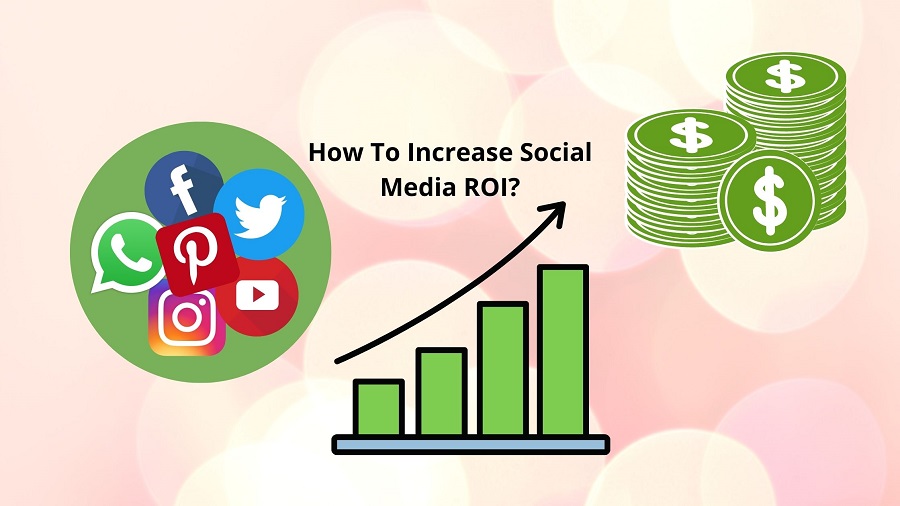Social video marketing is a dynamic strategy that utilizes videos to promote products, services, or brands on social media platforms. With the ever-increasing popularity of social media and the rise of video-sharing platforms, social video marketing has become an essential component of modern marketing campaigns. It harnesses the power of visual storytelling to engage audiences, create brand awareness, and drive desired actions.
1. Importance of Social Video Marketing for Brand Reach

Social video marketing is crucial for brand reach in today’s digital landscape. Videos can capture attention, evoke emotions, and convey messages in a highly engaging and memorable way. By incorporating video content into their marketing efforts, brands can expand their reach, connect with their target audience, and differentiate themselves from competitors. Social video marketing allows brands to leverage the vast user base and sharing capabilities of social media platforms, amplifying their message and increasing brand visibilit
2. Understanding Social Video Platforms
2.1 Major Social Video Platforms:
There are several major social video platforms where brands can effectively engage with their audience. These include YouTube, Facebook, Instagram, TikTok, Twitter, and LinkedIn. Each social channel has unique features, content formats, and audience demographics, offering different opportunities for brand promotion and engagement.
2.2 Key Features and Audience Demographics:
Understanding the features and audience demographics of social video platforms is crucial for targeting the right audience. For example, YouTube caters to a wide range of content categories and has a diverse user base, while Instagram is known for its visually appealing and short-form videos. TikTok, on the other hand, is popular among younger audiences and emphasizes short, entertaining videos.
2.3 Choosing the Right Platform for Your Brand:
When selecting a social video platform, it’s crucial to understand your target audience, the nature of your content, and your marketing goals. Analyze demographics, user behavior, and engagement patterns of individual platforms to determine where your brand is most likely to resonate and achieve the desired outcomes. Choosing the right platform ensures that your videos are seen by the right audience and maximize your brand’s impact.
3. Crafting a Video Marketing Strategy
3.1 Defining Your Goals and Target Audience:
Before diving into social video marketing, defining your goals and identifying your target audience is crucial. Decide what you want to achieve with your videos, whether it is increasing brand awareness, driving conversions, or promoting a specific product or service. Understanding your target audience’s preferences, needs, and pain points will help you create video content that resonates with them.
3.2 Creating Engaging and Shareable Video Content:
Creating engaging and shareable video content is at the core of a successful social video marketing strategy. Focus on storytelling, visually appealing visuals, and a compelling narrative to captivate your audience’s attention. Experiment with different video formats such as tutorials, testimonials, behind-the-scenes footage, or user-generated content to keep your content fresh and engaging.
3.3 Incorporating Storytelling into Your Videos:
Storytelling is a powerful tool in social video marketing. You can create a deeper and more meaningful connection by crafting narratives that evoke emotions and connect with your audience’s values and aspirations. Use storytelling elements such as characters, conflict, and resolution to engage your viewers and make your brand message more memorable.
3.4 Setting a Budget and Timeline:
When preparing a video marketing strategy, setting a budget and timeline that aligns with your resources and marketing goals is crucial. Consider factors like video production costs, equipment, editing software, and distribution expenses. Additionally, establish a timeline that outlines the production, editing, and distribution process to ensure the smooth execution of your video marketing initiatives.
4. Optimizing Videos for Social Media

4.1 Video Format and Length Considerations:
Different social media platforms have specific requirements and preferences for video formats and lengths. For example, Instagram favors square or vertical videos, while YouTube supports various aspect ratios. Consider these platform-specific guidelines when creating and optimizing your videos to ensure they display correctly and effectively engage your audience.
4.2 Capturing Attention with Compelling Thumbnails and Titles:
In the crowded landscape of social media, capturing attention is crucial. Create visually compelling thumbnails that represent the essence of your video and entice viewers to click and watch. Similarly, craft attention-grabbing titles that communicate the value or intrigue of your video content.
4.3 Incorporating Captions and Subtitles:
Adding captions and subtitles to your social videos is essential to cater to different viewing preferences and accessibility needs. Captions can enhance engagement and enable viewers to follow the content seamlessly, irrespective of audio being muted or their inability to listen to the video’s sound.
4.4 Leveraging Hashtags and Trends:
Harness the power of hashtags and trending topics to expand the reach of your social videos. Research and use relevant hashtags that align with your video content and target audience. It increases the discoverability of your videos and helps them surface in related searches and trending discussions.
5. Promoting and Amplifying Your Videos
5.1 Paid Promotion Strategies:
Boost the visibility and reach of your social videos by leveraging paid promotion strategies. Most social media platforms offer advertising options that allow you to target specific demographics, interests, and behaviors. Invest in targeted video ads to reach a broader audience and drive engagement and conversions.
5.2 Influencer Collaborations and Partnerships:
Partnering with influencers can significantly amplify your social video marketing efforts. Identify influencers relevant to your industry or niche who have a substantial and engaged following. Collaborate with them to create videos that promote your brand, products, or services. Influencers’ authentic recommendations and endorsements can generate trust and interest among their followers.
5.3 Cross-Platform Promotion Techniques:
Promote your social videos across multiple platforms to maximize their visibility and impact. Share your videos on various social media channels, embed them in blog posts or email newsletters, and cross-promote them in relevant online communities or forums. Utilize the strengths of each platform to extend your video’s reach and engagement.
5.4 Engaging with Your Audience and Encouraging Sharing:
Actively engage with your audience by responding to comments, questions, and feedback on your social videos. Encourage viewers to share your videos by including clear calls to action or incentivizing sharing through contests or giveaways. User-generated content and shares from satisfied customers can significantly boost the reach and credibility of your video content.
6. Measuring Success and Analyzing Metrics
6.1 Defining Key Performance Indicators (KPIs):
Identify key performance indicators that align with your video marketing goals. These may include metrics like video views, engagement rate, click-through rate, conversion rate, or brand sentiment. Set benchmarks and regularly track these metrics to measure the success and effectiveness of your social video marketing campaigns.
6.2 Tracking Video Engagement and Reach:
Use the analytics and insights provided by social media platforms to monitor the engagement and reach of your videos. Assess metrics like views, watch time, likes, comments, and shares to understand how your audience is interacting with your videos. Identify trends and patterns that can inform future video content and optimization strategies.
6.3 Analyzing Audience Feedback and Sentiment:
Audience feedback, comments, and sentiment regarding your social videos are crucial. Analyze the audience responses to gauge the overall perception of your video content. Consider this feedback and make adjustments or improvements to align with your audience’s preferences and expectations. pay
6.4 Adjusting Strategies Based on Data Insights:
Continuously analyze the data and insights gathered from your video marketing efforts. Identify trends, patterns, and opportunities for improvement. Based on the data insights, adjust your social video marketing strategies, content creation techniques, distribution channels, or targeting approaches. Data-driven decision-making ensures that you optimize your videos for better performance, engagement, and results.
7. Overcoming Challenges in Social Video Marketing
7.1 Managing Production Costs and Resources:
Video production can involve significant costs and resource allocation. To overcome this challenge, consider outsourcing video production to professional agencies or freelancers. Alternatively, explore cost-effective production techniques such as user-generated content, smartphone filming, or repurposing existing content.
7.2 Dealing with Negative Feedback and Criticism:
In the world of social media, negative feedback and criticism are inevitable. Respond to negative comments or feedback with professionalism and empathy. Address concerns, provide clarifications, or offer solutions to mitigate any potential damage to your brand reputation. Turn negative experiences into opportunities for growth and improvement.
7.3 Staying Up-to-Date with Platform Algorithms and Trends:
Social media platforms are constantly evolving, and algorithm changes can impact the visibility and reach of your videos. Stay informed about platform updates, algorithm changes, and best practices. Continuously adapt your video marketing strategies to align with the latest trends, formats, and social media platform algorithms.
7.4 Balancing Authenticity and Brand Messaging:
Maintaining authenticity when communicating your brand’s message in social video marketing can be a challenge. Strive to strike a balance between promotional content and genuine storytelling. Ensure your videos align with your brand values and resonate with your target audience while providing value and engaging experiences.
Conclusion
It’s essential to understand your target audience, create high-quality and engaging video content, optimize videos for different platforms, and continuously monitor and refine your strategy based on data-driven insights to harness the power of social video marketing effectively. You can ignite your brand’s reach, increase engagement, and build a powerful online presence in today’s social media landscape by leveraging the ability of videos.



